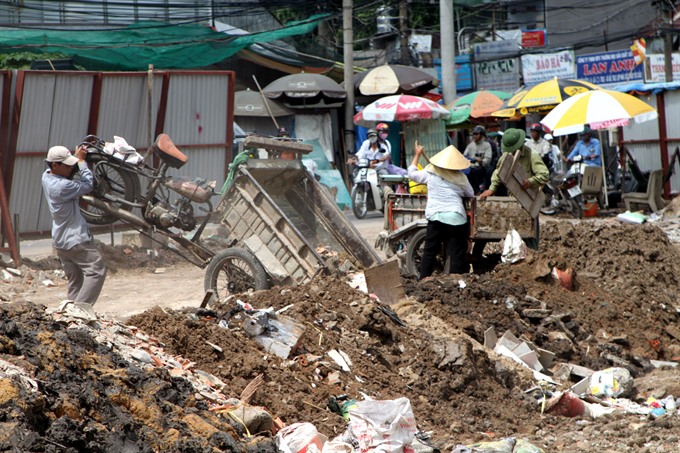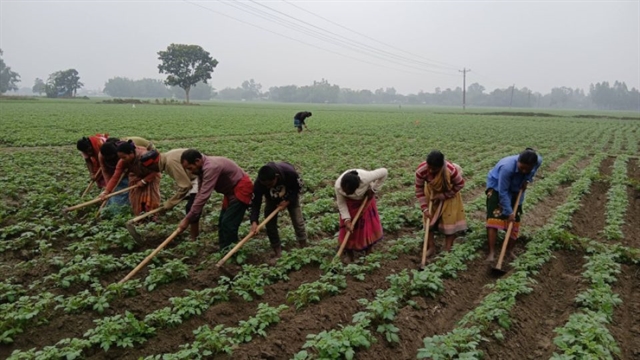 Environment
Environment

" />The People’s Committee of HCM City has submitted a solid-waste treatment plan to 2020 to the Construction Ministry, which will seek approval from the central Government.
 |
| A construction waste dump in HCM City. The city has submitted a solid-waste treatment plan for re-use and recycling of waste. — VNA/VNS Photo |
HCM CITY — The People’s Committee of HCM City has submitted a solid-waste treatment plan to 2025 to the Ministry of Construction, which will seek approval from the central Government.
The plan calls for re-use and recycling of waste by using advanced waste treatment technologies instead of the burying of waste.
Such advanced technology will save land use and construction costs for new waste treatment facilities.
The plan creates an inter-district network of entrepots using advanced technologies to meet demand for collection, transport and treatment of solid waste.
The plan also identifies facilities and areas of potential operation to meet demand for the entire city.
Covering 30,400sq.km with around 18 million people, the areas under the scheme border the provinces of Bình Dương, Đồng Nai, Bà Rịa – Vũng Tàu, Tây Ninh, Long An and Tiền Giang.
All of these areas discharge 9,000 to 9,500 tonnes of solid waste per day, including 7,500 to 8,000 tonnes a day from household activities, as well as 1,500 tonnes a day from construction works.
The volume of solid waste from household activities has increased by 7 to 8 per cent annually in these areas.
Hazardous solid waste is around 150,000 tonnes per year, including 6,300 tonnes of hazardous healthcare waste per year.
Around 7,200 to 7,500 tonnes of household waste, or over 90 per cent of solid waste from households, are collected and transported to waste treatment complexes every day.
However, the solid waste is not sorted, making it difficult for waste treatment facilities to recycle or re-use.
Burying waste remains the main means of disposal, accounting for 75 per cent of the city’s daily waste discharges. Fifteen per cent of waste is treated with compost recycling technology and five to 10 per cent with waste burning technology.
HCM authorities said the high rate of waste burial poses risks to public health and to the environment.
As the city has no large recycling plants, solid waste has to be purchased and sorted at nearly 1,000 small-scale and household facilities and recycled at 10 recycling plants.
The city has two treatment complexes, the 614-ha Đa Phước Complex in Bình Chánh District’s Đa Phước Commune and the Phước Hiệp Complex in Củ Chi District’s Phước Hiệp Commune.
City authorities have plans to reduce the area of the Phước Hiệp Waste Treatment Complex from its current 687ha to 533ha.
Two other complexes, 45-ha Đông Thạnh Complex in Hóc Môn District and the 25-ha Gò Cát Complex in Bình Chánh District, were closed in the past decade.
Speaking at a meeting with a delegation from the People’s Council last week, Huỳnh Thị Lan Phương, deputy director of the Vietnam Waste Solutions, a licensed Vietnamese corporation fully owned by California Waste Solutions, said the increase in waste volume treated at Đa Phước Complex had exerted pressure on the plant. Around 3,000 to 5,000 tonnes are treated each day.
In order to reduce the volume of waste treated at Đa Phước, Việt Nam Waste Solutions will invest in another waste-burning plant which can treat 1,500 tonnes of waste per day, Phương said.
The treated waste will be used to make by-products such as electric power, VNG gas, compost and organic fertiliser. — VNS




